Pinxter Azalea
- October 17, 2023
- 0 comment
The Pinxter Azalea, scientifically known as Rhododendron periclymenoides, is a striking native North American shrub renowned for its exquisite, fragrant blossoms and vibrant springtime displays. This deciduous shrub typically reaches heights of 6 to 10 feet and features elliptical, deep green leaves that transform into a spectacular show of funnel-shaped, pink to pale lavender flowers in late spring.


These blossoms are a source of great delight for garden enthusiasts, as they emit a sweet and captivating fragrance that lures pollinators, including bees and butterflies. Pinxter Azaleas are cherished for their ornamental appeal and adaptability to various soil conditions, though they thrive in acidic, well-drained soils and dappled shade.
Their charming, delicate appearance and lovely aroma make them a popular choice for garden landscapes and woodland gardens, contributing to the splendor of the natural world with their springtime charm.
| Characteristics | Description |
| Scientific Name | Rhododendron periclymenoides |
| Common Name | Pinxter Azalea |
| Family | Ericaceae |
| Height | 6 to 10 feet |
| Foliage | Deciduous |
| Leaf Shape | Elliptical |
| Leaf Color | Deep Green |
| Flower Color | Pink to Pale Lavender |
| Flower Shape | Funnel-shaped |
| Fragrance | Sweet and Captivating |
| Bloom Time | Late Spring |
| Preferred Soil Type | Acidic, Well-Drained |
| Light Requirements | Dappled Shade |
| Habitat | Native to North America |
| Ecological Importance | Attracts Bees and Butterflies |
| Landscape Use | Ornamental, Woodland Gardens |
| USDA Hardiness Zones | 4-7 |
Botanical Beauty of “Pinxter Azalea”
The Pinxter Azalea, known scientifically as Rhododendron periclymenoides, is an exquisite native North American shrub celebrated for its captivating beauty. This deciduous wonder stands tall at 6 to 10 feet and is a true spectacle to behold, particularly in late spring. With elliptical, deep green leaves that serve as an elegant backdrop, the Pinxter Azalea showcases its floral prowess with a profusion of pink to pale lavender, funnel-shaped blossoms. Its botanical beauty is a testament to nature’s artistry and has made it a beloved feature of many gardens and natural landscapes.
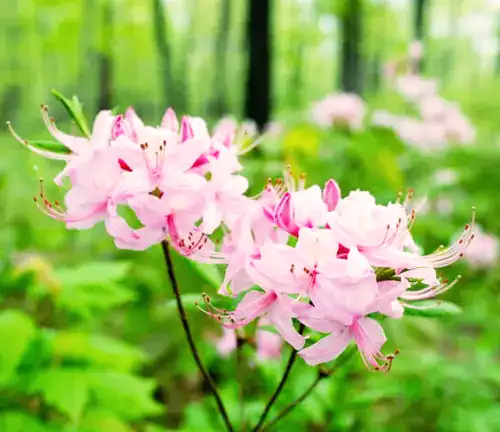
Woodland Elegance

The Pinxter Azalea is a master of woodland elegance. Often found gracing the forest understory, this deciduous shrub adds a touch of charm and sophistication to woodland landscapes. Its delicate yet vibrant blooms create a magical scene, transforming the dappled shade of the forest into a spectacle of color and fragrance. Woodland gardens and natural settings benefit from the Pinxter Azalea’s grace, making it a sought-after addition for those who appreciate the subtle grandeur of nature.
Ecological Importance
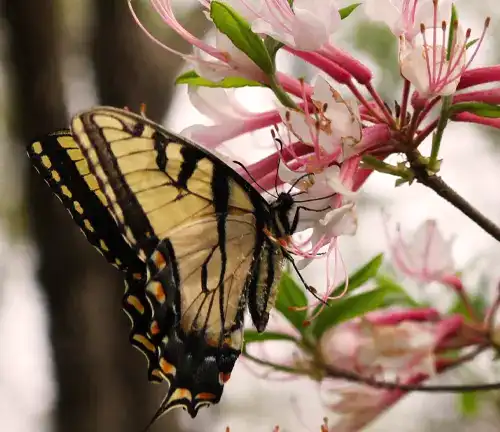
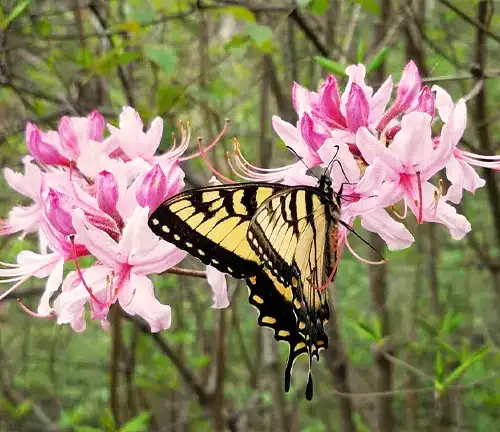
Beyond its aesthetic appeal, the Pinxter Azalea plays a vital role in local ecosystems. Its nectar-rich, fragrant blossoms attract a diverse array of pollinators, including bees and butterflies. This ecological importance contributes to the well-being of the surrounding flora and fauna, highlighting the interconnectedness of all living organisms in the natural world. By supporting these pollinators, the Pinxter Azalea helps ensure the reproduction and survival of other plants, making it an unsung hero in the ecosystem.
Cultivation and Conservation
Cultivating the Pinxter Azalea is a joy for garden enthusiasts. It thrives in well-drained, acidic soils and is particularly well-suited for woodland gardens, where it can thrive in dappled shade. However, it’s important to note that this native beauty is also at risk due to habitat loss and over-harvesting. Conservation efforts are crucial to protect this species and maintain its place in our natural landscapes.
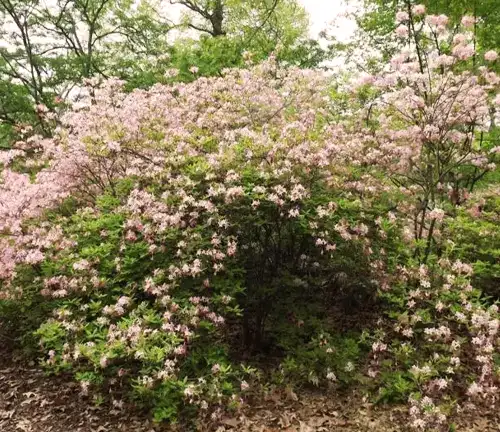
Fragrance
One of the standout features of the Pinxter Azalea is its enchanting fragrance. The sweet and captivating scent of its blossoms adds another dimension to its allure. The aroma is a delightful sensory experience that can fill the air in a garden, creating an ambiance that’s both soothing and invigorating.
Soil Stabilization
Aside from its ornamental attributes, the Pinxter Azalea offers practical benefits. Its extensive root system aids in soil stabilization, making it a valuable addition to landscapes prone to erosion. This function contributes to overall ecosystem health and the protection of nearby water bodies from sedimentation.
Common Uses
While the Pinxter Azalea is often cultivated for its ornamental beauty, it has other common uses as well. In traditional medicine, some indigenous communities have employed parts of the plant for various remedies. Additionally, the wood of the shrub has been utilized in the past for crafting items like tool handles and walking sticks, adding to its historical significance.
Conclusion
In summary, the Pinxter Azalea is a botanical treasure, celebrated for its beauty, ecological importance, and versatility. Whether it graces woodland gardens with its elegance, supports local pollinators, or helps stabilize soil, its contributions to both natural and human landscapes are undeniable. Cultivating and conserving this native species is not only a testament to our appreciation of nature’s artistry but also a step towards preserving the delicate balance of our ecosystems. The Pinxter Azalea, with its fragrant blooms and elegant presence, reminds us of the beauty and interconnectedness of the natural world.
Different Species
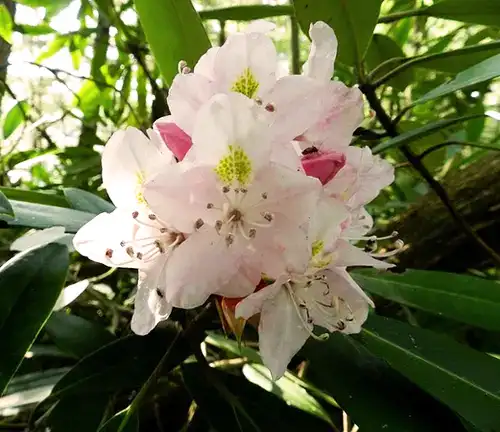
Rhododendron maximum
(Rosebay Rhododendron)
This species is native to the eastern United States and features large clusters of white to light pink flowers. It’s a tall evergreen shrub or small tree.
Rhododendron catawbiense (Catawba Rhododendron)
Native to the southeastern United States, this species is known for its vibrant purple to violet flowers and is often used in landscaping.
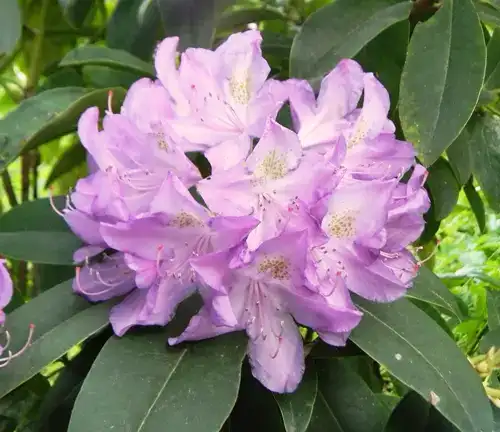
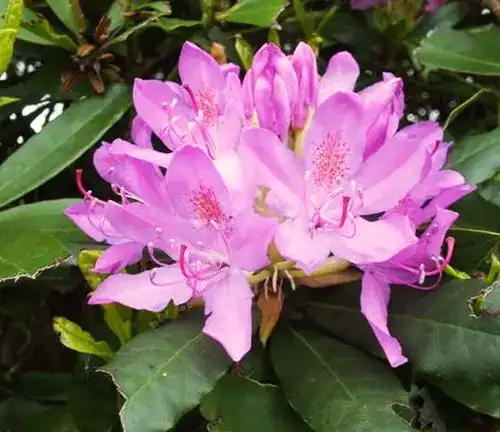
Rhododendron ponticum
(Common Rhododendron)
Native to Europe and Asia, this evergreen rhododendron is popular in gardens and has invasive tendencies in some regions.
Rhododendron indicum
(Indica Azalea)
This species includes a wide range of cultivated azaleas known for their showy, often multi-colored blooms. They are popular ornamental plants.

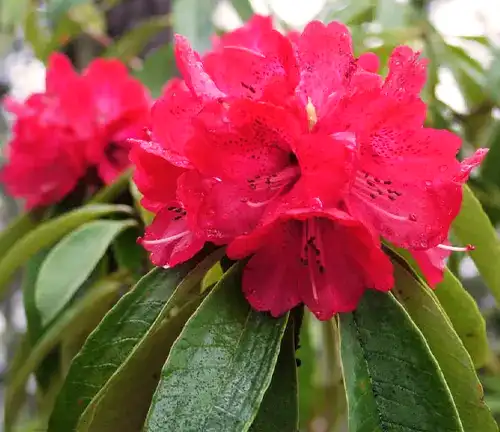
Rhododendron arboreum
(Tree Rhododendron)
Found in the Himalayas and Southeast Asia, this species includes both evergreen and deciduous forms and is often associated with high-altitude regions.
Rhododendron luteum
(Pontic Azalea or Yellow Azalea)
Native to parts of Europe and Asia, this deciduous azalea is renowned for its fragrant, yellow flowers.
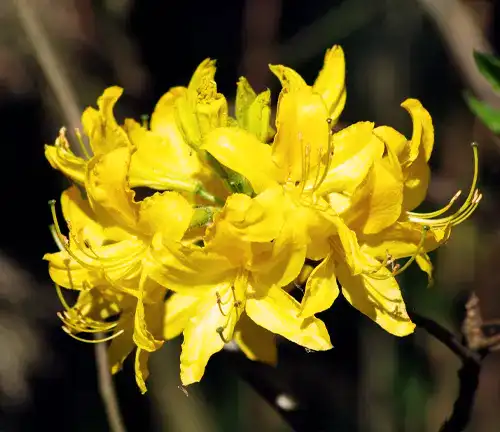
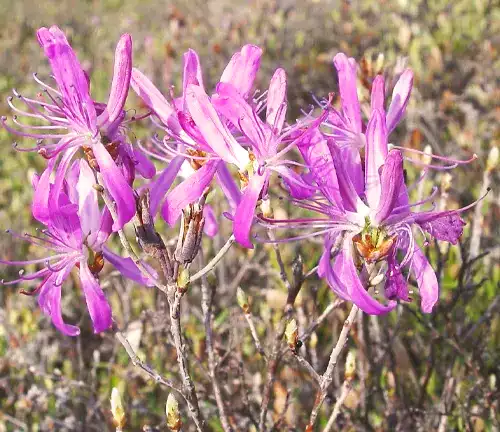
Rhododendron canadenseI
(Rhodora)
This smaller species is native to eastern North America and produces distinctive purple-pink flowers early in the spring.
Frequently Asked Questions (FAQs)
- What is Pinxter Azalea?
Pinxter Azalea (Rhododendron periclymenoides) is a native North American deciduous shrub known for its vibrant pink to pale lavender flowers and fragrant blossoms. - When does Pinxter Azalea bloom?
Pinxter Azalea typically blooms in late spring, producing a profusion of colorful, funnel-shaped flowers. - Where is Pinxter Azalea found in the wild?
It is native to eastern North America and is often found in woodland and forested areas. - What are the different varieties of Pinxter Azalea?
There are several varieties of Pinxter Azalea, including the typical Rhododendron periclymenoides variety, smooth-stemmed varieties, and those with variations in flower color. - How do I care for Pinxter Azalea in my garden?
Pinxter Azaleas prefer well-drained, acidic soils and dappled shade. They benefit from regular watering and can be pruned after flowering to maintain shape and size. - Are Pinxter Azaleas fragrant?
Yes, Pinxter Azaleas are known for their sweet and captivating fragrance, which makes them a popular choice for gardens. - Do Pinxter Azaleas attract pollinators?
Yes, the fragrant blossoms of Pinxter Azalea attract pollinators, including bees and butterflies, making them ecologically important. - Are Pinxter Azaleas used in traditional medicine?
Some indigenous communities have used parts of Pinxter Azalea for various medicinal purposes, but it’s essential to consult with experts before using any plant for medicinal uses. - Can Pinxter Azalea help with soil stabilization?
Yes, the extensive root system of Pinxter Azalea can help stabilize soil, which is particularly valuable in preventing erosion. - Are there any conservation concerns regarding Pinxter Azalea?
Yes, habitat loss and over-harvesting have put some populations of Pinxter Azalea at risk. Conservation efforts are essential to protect this native species.


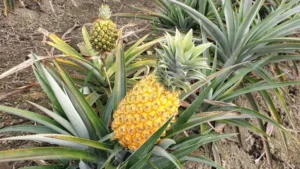

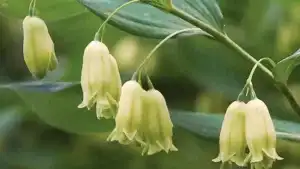
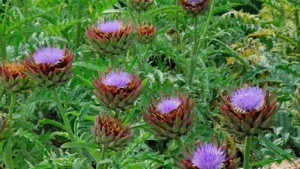
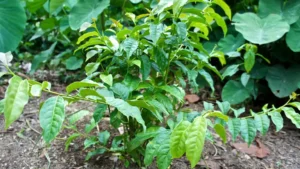
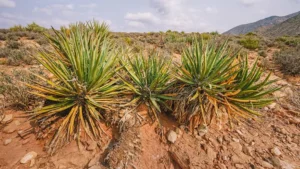
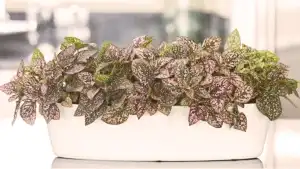
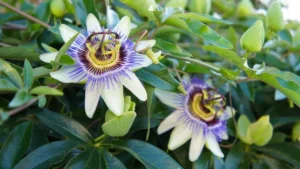
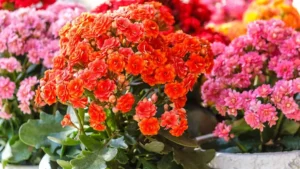



Leave your comment